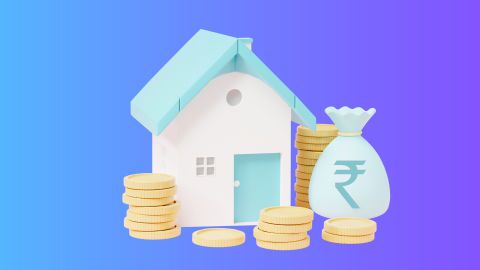The Pradhan Mantri Awaas Yojana – Gramin (PMAY-G) was introduced on 1 April 2016 by the Government of India with the aim of addressing rural housing shortages. Managed by the Ministry of Rural Development (MoRD) and implemented through the Ministry of Housing and Urban Affairs (MoHUA), this flagship initiative seeks to provide every eligible rural household with a permanent (pucca) home equipped with essential facilities.
The scheme targets families without homes or those residing in kutcha or severely damaged houses. Each home under this scheme must cover at least 25 square metres, including space for hygienic cooking.
PMAY-G has played a crucial role in achieving the vision of “Housing for All,” especially in rural parts of the country. As of 27 September 2022, 2 crore homes have been constructed out of the total target of 2.72 crore.
Beneficiaries are selected based on criteria from the Socio-Economic and Caste Census (SECC), and their eligibility is verified by Gram Sabhas. The financial support is sent directly to the beneficiary’s Aadhaar-linked bank or post office account. Initially aimed for completion in 2022, the scheme was extended until 31 March 2024.
PMAYG online application process
The Central Government of India launched the Pradhan Mantri Awaas Yojana - Gramin (PMAY-G) to help alleviate the issue of homeless in India. The scheme aims to rehabilitate those living in damaged Kucha houses by building pucca houses for them. Under this scheme, one can avail of a loan of up to Rs. 70,000 at an interest subsidy of 3%* to build a pucca home. One can avail of a subsidy on the maximum principal amount of Rs. 2 lakh*.
Those planning to apply to avail of the benefits associated with the PMAY-G scheme can make an application both online and offline.
Applying offline is quite simple. The applicant must contact their ward member or simply pay a visit to the Gram Panchayat centre and ask for the PMAY application form. To avail of the benefits of the scheme, the applicant must submit the duly filled application to the authorities at the gram panchayat. The authorities are then responsible for conveying the details of the applicant further.
In case the individual finds it difficult to fill the form on their own, they can let a third-party agent do the needful for them. However, in this case, the third party filling the form must take a consent form from the applicant stating they have been given the right to use the applicant's Aadhar details.
Aim and objective of PMAY-G
The main objective of PMAY-G is to provide permanent housing with basic amenities to all rural families who are either homeless or living in kutcha or unsafe houses. The scheme particularly aims to cover 1 crore households across rural India within a period of three years—from 2016-17 to 2018-19.
The houses built under PMAY-G are intended to be sustainable and environment-friendly, using local materials, trained masons, and customised regional designs. The programme does not stop at house construction; it follows a holistic “habitat development” approach by promoting convergence with other schemes such as Swachh Bharat Mission-Gramin, MGNREGA, and Ujjwala Yojana.
By aligning with multiple government schemes, PMAY-G ensures that rural homes are not just shelters but full-fledged homes with toilets, LPG connections, and access to clean water and electricity. This integrated model aims to uplift living standards in rural areas and reinforce community development, social dignity, and economic well-being.
Benefits of PMAY-G
Here are the main benefits provided under the PMAY-G scheme:
Financial assistance of Rs. 1,20,000 is granted per unit in plain areas, and Rs. 1,30,000 per unit in hilly, difficult, and IAP districts such as the Himalayan and North-Eastern States, and Union Territories like Jammu & Kashmir.
Beneficiaries can also access institutional finance (loans) of up to Rs. 70,000 at 3% lower interest rates to assist with house construction. Subsidy is available on a maximum principal of Rs. 2,00,000.
The constructed house must have a minimum area of 25 square metres, including space for a hygienic kitchen.
In partnership with the Swachh Bharat Mission-Gramin (SBM-G), beneficiaries are eligible for up to Rs. 12,000 to construct toilets.
Beneficiaries receive employment support under MGNREGA, with 95 days of paid labour at Rs. 90.95 per day. This also includes access to rural mason training.
One LPG connection per household is provided under the Pradhan Mantri Ujjwala Yojana.
PMAY-G links with other government schemes to ensure piped water, power supply, clean cooking fuel, and proper waste treatment.
All payments under the scheme are directly credited to Aadhaar-linked bank or post office accounts to ensure transparency and efficiency.
Note: All eligible beneficiaries are selected using housing deprivation indicators from the SECC 2011, verified through Gram Sabha resolutions.
Eligibility criteria of PMAY-G
Eligible beneficiaries under PMAY-G are identified through SECC data, focusing on those with no homes or those residing in one or two-room houses with kutcha roofs and kutcha walls. These are the main categories considered for automatic inclusion:
- Households that are entirely homeless
- Families who are destitute or survive by begging
- Individuals involved in manual scavenging
- Primitive Tribal Groups
- Those who were legally freed from bonded labour
This list is subject to verification and exclusion through local Gram Sabha approval processes.
For families who may not qualify for PMAY-G or need financing beyond the scheme's scope, exploring private home loan options becomes essential. Bajaj Finserv provides flexible home financing solutions with tenures up to 32 years and quick approval within 48 hours*. Check your loan offers from Bajaj Finserv to secure your dream home. You may already be eligible, find out by entering your mobile number and OTP.










